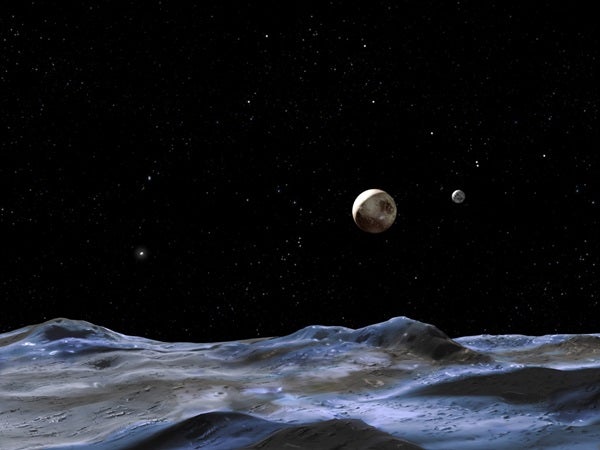When American astronomer Clyde Tombaugh discovered Pluto on February 18, 1930, he thought he had discovered a new planet. He was right — sort of. Although scientists immediately raised Pluto into the pantheon of full-fledged planets, observations throughout the rest of the 20th century created doubts. After all, Pluto was much smaller than any of the other planets and orbited along an eccentric path that occasionally brought it inside Neptune’s orbit.
Today, astronomers have elevated Pluto to a new level of distinction. It is the brightest member of the so-called Kuiper Belt — a disk of icy objects that lies approximately 30 to 50 times Earth’s distance from the Sun. It represents a fundamentally new part of the solar system, and one that has never been explored in detail. The New Horizons spacecraft will start the scientific reconnaissance of this mysterious belt when it flies past Pluto in July 2015. Read more about the Kuiper Belt and its importance to the study of the solar system in the article below, “What lies beyond the planets,” by New Horizons’ principal investigator, S. Alan Stern.










